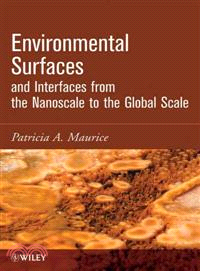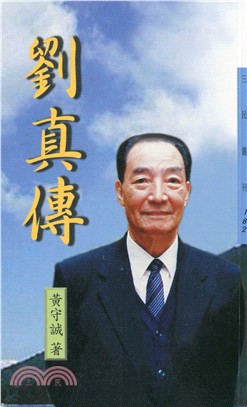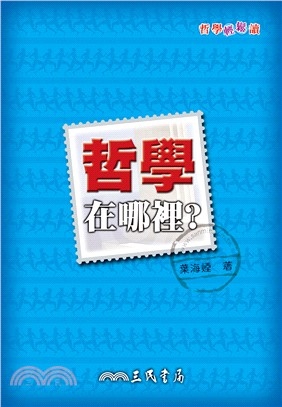Environmental Surfaces And Interfaces From The Nanoscale To The Global Scale
商品資訊
定價
:NT$ 8797 元優惠價
:90 折 7917 元
若需訂購本書,請電洽客服 02-25006600[分機130、131]。
相關商品
商品簡介
作者簡介
目次
商品簡介
An advanced exploration ofwater-rock interactions
Based on the author's fifteen years of teaching and tried-and-tested experiences in the classroom, here is a comprehensive exploration of water-rock interactions. Environmental Surfaces and Interfaces from the Nanoscale to the Global Scale covers aspects ranging from the theory of charged particle surfaces to how minerals grow and dissolve to new frontiers in W-R interactions such as nanoparticles, geomicrobiology, and climate change.
Providing basic conceptual understanding along with more complex subject matter, Professor Patricia Maurice encourages students to look beyond the text to ongoing research in the field. Designed to engage the learner, the book features:
Numerous case studies to contextualize concepts
Practice and thought questions at the end of each chapter
Broad coverage from basic theory to cutting-edge topics such as nanotechnology
Both basic and applied science
This text goes beyond W-R interactions to touch on a broad range of environmental disciplines. While written for advanced undergraduate and graduate students primarily in geochemistry and soil chemistry, Environmental Surfaces and Interfaces from the Nanoscale to the Global Scale will serve the needs of such diverse fields as environmental engineering, hydrogeology, physics, biology, and environmental chemistry.
Based on the author's fifteen years of teaching and tried-and-tested experiences in the classroom, here is a comprehensive exploration of water-rock interactions. Environmental Surfaces and Interfaces from the Nanoscale to the Global Scale covers aspects ranging from the theory of charged particle surfaces to how minerals grow and dissolve to new frontiers in W-R interactions such as nanoparticles, geomicrobiology, and climate change.
Providing basic conceptual understanding along with more complex subject matter, Professor Patricia Maurice encourages students to look beyond the text to ongoing research in the field. Designed to engage the learner, the book features:
Numerous case studies to contextualize concepts
Practice and thought questions at the end of each chapter
Broad coverage from basic theory to cutting-edge topics such as nanotechnology
Both basic and applied science
This text goes beyond W-R interactions to touch on a broad range of environmental disciplines. While written for advanced undergraduate and graduate students primarily in geochemistry and soil chemistry, Environmental Surfaces and Interfaces from the Nanoscale to the Global Scale will serve the needs of such diverse fields as environmental engineering, hydrogeology, physics, biology, and environmental chemistry.
作者簡介
Patricia Maurice is Professor in the Department of Civil Engineering and Geological Sciences at the University of Notre Dame. She is on the editorial panel of Environmental Engineering Science, and sits on the Board of Directors for the Consortium of Universities for the Advancement of Hydrological Sciences.
目次
Preface.
Constants and Units.
Periodic Table of the Elements.
1 Some Fundamental Chemical Thermodynamic and Kinetic Concepts.
Concentration Units.
Thermodyamic Versus Kinetic Approaches.
Introductory Thermodynamics.
A Brief Introduction to Kinetics.
Questions for Further Thought.
Further Reading.
2 The Hydrologic Cycle as Context for Environmental Surfaces and Interfaces.
The Structure and Fundamental Properties of Water.
The Chemical Composition of the Earth.
The Critical Zone.
The Hydrologic Cycle.
Oceans.
Atmosphere.
Underground water.
Surface Waters: Focus on Rivers.
Water Budgets and Chemical Fluxes in Terrestrial Ecosystems.
Questions for Further Thought.
Further Reading.
3 Some Minerals of Special Interest to Environmental Surface Chemistry.
Gibbsite.
Quartz.
Kaolinite.
Smectite: Example Montmorillonite.
Fe(hydr)oxides.
Manganese Oxides.
Calcite.
Feldspars.
Zeolites.
Questions for Further Thought.
Further Reading.
4 Some Key Techniques for Investigating Surfaces and Interfaces.
A Brief Overview of Some Commonly Used Techniques.
In-Depth Descriptions of Some Key Techniques.
Scanning Electron Microscopy (SEM).
Microscopies for Biofilm Imaging.
Questions for Further Thought.
Further Reading.
5 Surfaces and Interfaces.
What is a Surface? What is an Interface?
The Challenges of Defining Surfaces and Interfaces.
Surfaces are Complex.
Surface Free Energy and Surface Excess.
Surface Tension and Related Phenomena.
Some Approaches to Surface and Interface Modeling.
Case Study: Bacteria–Mineral–Gas Interactions in the Vadose Zone.
Questions for Further Thought.
Further Reading.
6 The Charged Interface and Surface Complexation.
Some Evidence for Surface Charge.
Sources of Mineral Surface Charge.
Points of Zero Charge.
Sorption Terminology.
Cation Exchange Capacity.
Sorption Isotherms.
Adsorption Isotherm Equations.
The Double Layer, Gouy-Chapman Theory.
Beyond Gouy-Chapman: Surface Complexation Models.
Model Verification and Validation.
Case Study: Incorporating the Work Associated with Removal of Water During Adsorption into the TLM.
DLVO Theory and Colloid Attachment in Porous Media.
Questions for Further Thought.
Further Reading.
7 Sorption: Inorganic Cations and Anions.
A Typical Sorption Experiment Design.
Metal Cation Sorption.
Inorganic Anion Adsorption.
Importance of Redox State and Valence to Inorganic Ion Adsorption.
Questions for Further Thought.
Further Reading.
8 Sorption: Organic Compounds.
A Brief Introduction to Organic Chemistry.
Some Organic Compounds of Interest in Environmental Surface Chemistry.
Sorption of Simple Organic Ligands, Surfactants, and Natural Organic Matter.
Metal–Ligand Coadsorption: Ternary Surface Complexes.
Sorption of Some Organic Pollutants.
The Kd Approach to Hydrophobic Organic Compound Transport in Porous Media.
Activated Carbon and Sorption of VOCs.
Questions for Further Thought.
Further Reading.
9 Mineral Nucleation and Growth.
Saturation State and Mineral Nucleation: An Example of the Confluence of Thermodynamics and Kinetics.
From Nucleation to Growth.
Impurities and Growth at Steps.
Monte Carlo Simulations of Crystal Growth.
Biomineralization.
Carbonate Precipitation in the Marine Environment.
Questions for Further Thought.
Further Reading.
10 Mineral Weathering and Dissolution.
Chemical, Physical, and Biological Weathering.
Thermodynamics of Mineral Weathering.
Kinetics of Mineral Dissolution.
Comparison of Laboratory- and Field-Based Dissolution Rates.
Rainfall and Weathering: An Example from the Hawaiian Islands.
Case Study: Weathering in the Antarctic Dry Valleys.
Reactors for Dissolution Experiments.
The Use of Radiogenic Isotopes in Weathering Studies.
Questions for Further Thought.
Further Reading.
11 Plants as Environmental Surfaces.
Ecohydrology and Soil Moisture Balance.
Some Notes on Angiosperm Physiology.
The Nutrient Needs of Plants.
Effects of Plants on Mineral Dissolution and Weathering.
Modes of Plant Elemental Cycling.
Plants and Biomineralization: Phytoliths.
Plants and Formations in Limestone Caves.
Phytoremediation as an Example of Plant-Mineral-Contaminant Interactions.
Questions for Further Thought.
Further Reading.
12 Microorganisms As Environmental Surfaces.
How Microorganisms "make a Living".
Microbial Growth Curves.
Bacterial Groups.
Bacterial Cell Walls.
Bacterial Adhesion and Biofilms.
Bacterial-Promoted Mineral Dissolution.
Microbial Biomineralization.
Case Study: Bioremediation of U at the Oak Ridge National Laboratory Site.
Microbial Fuel Cells.
Questions for Further Thought.
Further Reading.
13 Environmental Nanoscience and Nanotechnology.
What is a Nanoparticle?
Nanoparticle Occurrence and Distribution.
What Makes a Nanoparticle Different?
Self-Assembly and Templating.
Nanoparticle Transport in Porous Media.
The Emergence of Nanotechnology.
Potential Environmental Effects of Engineered Nanoparticles.
Questions for Further Thought.
Further Reading.
14 The Big Picture: Interface Processes and the Environment.
Reactive Transport Models for Metals and Radionuclides in Porous Media.
Acid Rain Effects on Chemical Weathering.
Acid Mine Drainage.
Environmental Particles and Climate Change.
Scaling Phenomena: Integrating Observations from the Atomic to Watershed to the Global Scale.
Questions for Further Thought.
Further Readings.
Glossary of Terms.
References.
Index.
Constants and Units.
Periodic Table of the Elements.
1 Some Fundamental Chemical Thermodynamic and Kinetic Concepts.
Concentration Units.
Thermodyamic Versus Kinetic Approaches.
Introductory Thermodynamics.
A Brief Introduction to Kinetics.
Questions for Further Thought.
Further Reading.
2 The Hydrologic Cycle as Context for Environmental Surfaces and Interfaces.
The Structure and Fundamental Properties of Water.
The Chemical Composition of the Earth.
The Critical Zone.
The Hydrologic Cycle.
Oceans.
Atmosphere.
Underground water.
Surface Waters: Focus on Rivers.
Water Budgets and Chemical Fluxes in Terrestrial Ecosystems.
Questions for Further Thought.
Further Reading.
3 Some Minerals of Special Interest to Environmental Surface Chemistry.
Gibbsite.
Quartz.
Kaolinite.
Smectite: Example Montmorillonite.
Fe(hydr)oxides.
Manganese Oxides.
Calcite.
Feldspars.
Zeolites.
Questions for Further Thought.
Further Reading.
4 Some Key Techniques for Investigating Surfaces and Interfaces.
A Brief Overview of Some Commonly Used Techniques.
In-Depth Descriptions of Some Key Techniques.
Scanning Electron Microscopy (SEM).
Microscopies for Biofilm Imaging.
Questions for Further Thought.
Further Reading.
5 Surfaces and Interfaces.
What is a Surface? What is an Interface?
The Challenges of Defining Surfaces and Interfaces.
Surfaces are Complex.
Surface Free Energy and Surface Excess.
Surface Tension and Related Phenomena.
Some Approaches to Surface and Interface Modeling.
Case Study: Bacteria–Mineral–Gas Interactions in the Vadose Zone.
Questions for Further Thought.
Further Reading.
6 The Charged Interface and Surface Complexation.
Some Evidence for Surface Charge.
Sources of Mineral Surface Charge.
Points of Zero Charge.
Sorption Terminology.
Cation Exchange Capacity.
Sorption Isotherms.
Adsorption Isotherm Equations.
The Double Layer, Gouy-Chapman Theory.
Beyond Gouy-Chapman: Surface Complexation Models.
Model Verification and Validation.
Case Study: Incorporating the Work Associated with Removal of Water During Adsorption into the TLM.
DLVO Theory and Colloid Attachment in Porous Media.
Questions for Further Thought.
Further Reading.
7 Sorption: Inorganic Cations and Anions.
A Typical Sorption Experiment Design.
Metal Cation Sorption.
Inorganic Anion Adsorption.
Importance of Redox State and Valence to Inorganic Ion Adsorption.
Questions for Further Thought.
Further Reading.
8 Sorption: Organic Compounds.
A Brief Introduction to Organic Chemistry.
Some Organic Compounds of Interest in Environmental Surface Chemistry.
Sorption of Simple Organic Ligands, Surfactants, and Natural Organic Matter.
Metal–Ligand Coadsorption: Ternary Surface Complexes.
Sorption of Some Organic Pollutants.
The Kd Approach to Hydrophobic Organic Compound Transport in Porous Media.
Activated Carbon and Sorption of VOCs.
Questions for Further Thought.
Further Reading.
9 Mineral Nucleation and Growth.
Saturation State and Mineral Nucleation: An Example of the Confluence of Thermodynamics and Kinetics.
From Nucleation to Growth.
Impurities and Growth at Steps.
Monte Carlo Simulations of Crystal Growth.
Biomineralization.
Carbonate Precipitation in the Marine Environment.
Questions for Further Thought.
Further Reading.
10 Mineral Weathering and Dissolution.
Chemical, Physical, and Biological Weathering.
Thermodynamics of Mineral Weathering.
Kinetics of Mineral Dissolution.
Comparison of Laboratory- and Field-Based Dissolution Rates.
Rainfall and Weathering: An Example from the Hawaiian Islands.
Case Study: Weathering in the Antarctic Dry Valleys.
Reactors for Dissolution Experiments.
The Use of Radiogenic Isotopes in Weathering Studies.
Questions for Further Thought.
Further Reading.
11 Plants as Environmental Surfaces.
Ecohydrology and Soil Moisture Balance.
Some Notes on Angiosperm Physiology.
The Nutrient Needs of Plants.
Effects of Plants on Mineral Dissolution and Weathering.
Modes of Plant Elemental Cycling.
Plants and Biomineralization: Phytoliths.
Plants and Formations in Limestone Caves.
Phytoremediation as an Example of Plant-Mineral-Contaminant Interactions.
Questions for Further Thought.
Further Reading.
12 Microorganisms As Environmental Surfaces.
How Microorganisms "make a Living".
Microbial Growth Curves.
Bacterial Groups.
Bacterial Cell Walls.
Bacterial Adhesion and Biofilms.
Bacterial-Promoted Mineral Dissolution.
Microbial Biomineralization.
Case Study: Bioremediation of U at the Oak Ridge National Laboratory Site.
Microbial Fuel Cells.
Questions for Further Thought.
Further Reading.
13 Environmental Nanoscience and Nanotechnology.
What is a Nanoparticle?
Nanoparticle Occurrence and Distribution.
What Makes a Nanoparticle Different?
Self-Assembly and Templating.
Nanoparticle Transport in Porous Media.
The Emergence of Nanotechnology.
Potential Environmental Effects of Engineered Nanoparticles.
Questions for Further Thought.
Further Reading.
14 The Big Picture: Interface Processes and the Environment.
Reactive Transport Models for Metals and Radionuclides in Porous Media.
Acid Rain Effects on Chemical Weathering.
Acid Mine Drainage.
Environmental Particles and Climate Change.
Scaling Phenomena: Integrating Observations from the Atomic to Watershed to the Global Scale.
Questions for Further Thought.
Further Readings.
Glossary of Terms.
References.
Index.
主題書展
更多
主題書展
更多書展本週66折
您曾經瀏覽過的商品
購物須知
外文書商品之書封,為出版社提供之樣本。實際出貨商品,以出版社所提供之現有版本為主。部份書籍,因出版社供應狀況特殊,匯率將依實際狀況做調整。
無庫存之商品,在您完成訂單程序之後,將以空運的方式為你下單調貨。為了縮短等待的時間,建議您將外文書與其他商品分開下單,以獲得最快的取貨速度,平均調貨時間為1~2個月。
為了保護您的權益,「三民網路書店」提供會員七日商品鑑賞期(收到商品為起始日)。
若要辦理退貨,請在商品鑑賞期內寄回,且商品必須是全新狀態與完整包裝(商品、附件、發票、隨貨贈品等)否則恕不接受退貨。
























